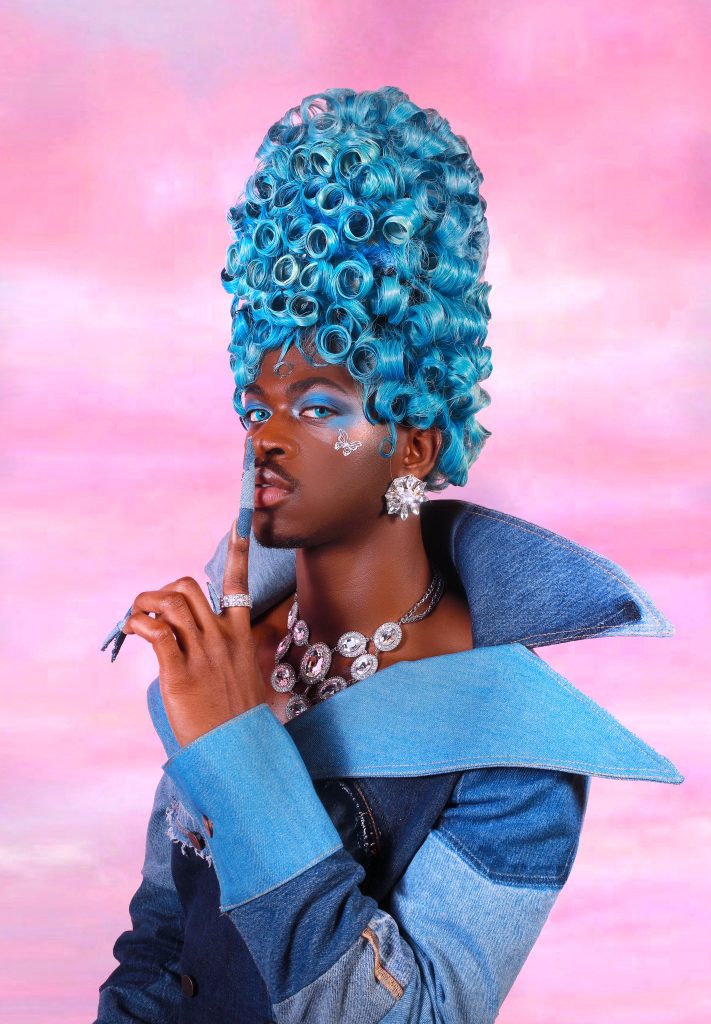Photo via Lil Nas X on Twitter
*This article is a modern analysis of the themes and content of “Homosexuality in 9 Easy Steps” (Fall 2000), the fourth installment of our From The Archive series.*
How much has the understanding of the gay agenda changed?
The queer community gets crap for “forcing” our sexuality onto others, and this isn’t a new concept; back in 2000, OutWrite published a piece titled Homosexuality in 9 Steps. This piece gave a nine-step guide on how to be gay, illustrating the irony in the idea that queer people choose to be queer (since following the nine step obviously cannot make a heterosexual person homosexual).
- Kiss a friend of the same gender: This is a great way to explore your sexuality, but if you aren’t into people of the same gender, you’re not going to like them more after kissing them. There are many lesbians and gay men who have kissed people of the opposite gender – it doesn’t make them bisexual or straight because sexuality is more than actions, it’s feelings and attraction.
- Reject your religion: There are plenty of LGBTQ+ people who are both religious and queer, the two do not have to conflict, and religion is not an excuse to be homophobic. Religion and queerness are not two opposite ends of a spectrum of ideology, they are not two different lifestyles. One is a theological set of ideals that can be followed and worshipped, and the other is a sexuality and/or gender. This is like comparing apples to oranges; they are too different to be thought of as in opposition.
- Girls – Cut your hair or get a mullet; Boys – Pierce your you-know-what: A woman’s hair does not determine her sexuality, as hair does not determine sexuality. As for men piercing their… piercings also don’t determine sexuality. Also, ouch.
- Give up all responsibility: Sexual orientation or gender identity does not determine how responsible a person is. There are lazy queers and lazy cisgender heterosexuals, and there are hardworking people that fall into both categories as well.
- Wear stickers saying, “Gay is the way!”: LGBTQ+ stickers are actually common, but wearing stickers won’t make a person like the same gender. There’s a little more to it than that.
- Girls – Join the army; Boys – Join the navy: Girls in most masculine fields often get their sexuality questioned, especially in fields that are more physically demanding. However, rigorous physical training does not make a woman like other women, but it will make her buff. While sailors have historically had a queer connotation to them, again, doing labor on a ship won’t make a men attracted to other men.
- Make sure to attend promiscuity training: The LGBTQ+ community has historically been stereotyped for being more promiscuous than their cisgender, heterosexual counterparts, but homosexuality in of itself is viewed as more promiscous than heterosexuality within the general American public, regardless of the acts involved by either relationship. Because there is a stigma attached to queerness, even homosexual relationships where members of the relationship are more conservative with their sexuality are viewed as promiscious just because they are queer. Queer relationships are viewed as an “other” that does not conform to heterosexual standards, making them seem promiscuous to non-queer individuals. This being said, sexuality does not make a person promiscuous; that all depends on an individual’s actions, regardless of their identification.
- Dispose of anything not in shades of lavender or pink in your wardrobe: Both lavender and pink are mainstream colors in womens’ fashion, and they have made their way into mens’ fashion as well. This step now seems absurd as the color one wears does not determine their sexuality, but there was a time where pink and lavender were viewed as “too feminine” for men to wear, so, if a man wore these colors, he must be homosexual. This step is a reminder of how gendered the world is, that even colors had a gender, and a reminder of the progress that has been made in de-gendering the world.
- Like our favorite lesbian comedian, come out on live television!: There are now many queer people who have come out in mainstream media – Lil Nas X, Janelle Monáe, Elliot Page, Lady Gaga – all of which have de-stigmatized being queer.
The most important takeaway from this nine-step guide is that the idea of sexuality being a choice and the LGBTQ+ community being “too loud” and “taking up too much room” continues to persist even twenty-two years after this article’s publication. Sexuality and gender are not things people choose to be, they are who people are. These nine steps point out common stereotypes the LGBTQ+ community is associated with, but following them will not “turn a person gay.” The initial piece demonstrates the idiocity of the idea that there is a guide to being queer. There’s no right or wrong way to be queer, and there’s no guide to turning cisgender heterosexual individuals queer, people are who they are and we cannot change, we can only accept it.
It is also important to note that though many of these stereotypes are now outdated, that does not mean that the LGBTQ+ community is free from any and all stereotypes – we are now subject to new ones instead. Sure, anyone can wear any color and no one will bat an eye, but gender roles are still prevalent, and the problem of breaking gender roles being associated with queerness still exists today.
Credits:
Author: Mia Riedel (She/Her)
Copy Editors: Christopher Ikonomou (Xe/He), Bella (She/They)

